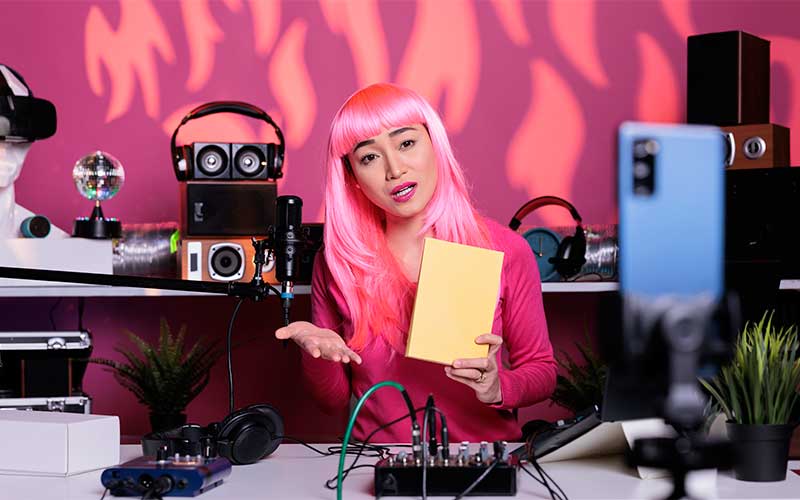How to Livestream on Various Platforms
Livestreaming is a popular way to connect with audiences in real-time, whether you’re a business looking to promote your products or an individual looking to share your experiences with the…
Livestreaming is a popular way to connect with audiences in real-time, whether you’re a business looking to promote your products or an individual looking to share your experiences with the world. In this article, we’ll explore how to livestream on various platforms, the equipment needed for livestreaming, and tips for successful livestreaming.
Platforms for Livestreaming
There are several popular platforms for livestreaming, each with its own unique features and audience. Here are a few of the most popular platforms:
Facebook Live
Facebook Live is a popular platform for livestreaming, with a built-in audience of over two billion users. With Facebook Live, you can share your livestream with your friends, followers, or specific groups, making it an excellent tool for businesses and individuals alike.
YouTube Live
YouTube Live is another popular platform for livestreaming, with a large audience of over two billion monthly active users. With YouTube Live, you can easily share your livestream on your YouTube channel or embed it on your website.
Instagram Live
Instagram Live is a great platform for livestreaming if you have a large following on Instagram. With Instagram Live, you can share your livestream with your followers and engage with them in real-time.
Twitch
Twitch is a popular platform for livestreaming video games, but it’s also used for other types of content, such as music and talk shows. With Twitch, you can engage with a large audience of gamers and other enthusiasts.
Equipment Needed for Livestreaming
To livestream effectively, you’ll need a few basic pieces of equipment. Here are some of the most important:
Camera and Microphone
A high-quality camera and microphone are essential for producing a professional-looking livestream. You can use a smartphone or a dedicated camera for your livestream, but be sure to test the audio and video quality before going live.
Lighting
Good lighting is key to producing a high-quality livestream. Use natural light or invest in some inexpensive lighting equipment to ensure that you’re well-lit during your livestream.
Internet Connection
A fast and reliable internet connection is essential for livestreaming. Make sure you have a strong Wi-Fi signal or a wired internet connection before going live.
Setting Up Your Livestream
Once you have your equipment in place, it’s time to set up your livestream. Here are some key steps to follow:
Choosing a Topic
Choose a topic that will appeal to your audience and align with your goals for the livestream. Consider what type of content your audience is interested in and what value you can provide to them.
Promoting Your Livestream
Promote your livestream in advance to ensure that you have a large audience. Use social media, email, or other marketing channels to get the word out about your livestream.
Testing Your Equipment
Before going live, test your equipment to ensure that everything is working properly. Check your camera, microphone, lighting, and internet connection to make sure that your livestream will be smooth and professional.
Going Live
When you’re ready to go live, start broadcasting on your chosen platform. Be sure to engage with your audience and respond to comments and questions in real-time.
Tips for Successful Livestreaming
Here are some tips to help you produce a successful livestream:
Engage with Your Audience
Engage with your audience during the livestream by responding to comments and questions in real-time. This will help build a connection with your viewers and keep them engaged throughout the livestream.
Be Prepared for Technical Difficulties
Technical difficulties can happen during any livestream, so be prepared by having backup equipment or a plan in case something goes wrong. Make sure to test your equipment before going live to minimize the chances of technical issues.
Keep Your Livestream Professional
Maintain a professional appearance and demeanor throughout your livestream, even if it’s a casual or informal topic. This will help build credibility and trust with your audience.
Conclusion
Livestreaming is a powerful tool for connecting with audiences and promoting your brand or content. By choosing the right platform, investing in the right equipment, and following these tips for successful livestreaming, you can produce high-quality, engaging livestreams that keep your audience coming back for more.
FAQs
- Can I livestream on multiple platforms simultaneously? Yes, there are tools available that allow you to livestream on multiple platforms at once, such as Restream and Streamlabs.
- How long should my livestream be? The length of your livestream will depend on your content and audience. As a general rule, aim for a livestream that is at least 30 minutes long to give your audience enough time to engage with your content.
- Do I need to have a large following to livestream? No, you don’t need to have a large following to livestream. Livestreaming can actually help you build your following by providing valuable content and engaging with your audience in real-time.
- Do I need to be an expert to livestream? No, you don’t need to be an expert to livestream. Livestreaming is a great way to share your experiences and knowledge with others, regardless of your level of expertise.
- Can I monetize my livestreams? Yes, many platforms allow you to monetize your livestreams through advertising, sponsorships, or donations. However, it’s important to disclose any sponsored content to your audience to maintain transparency.






